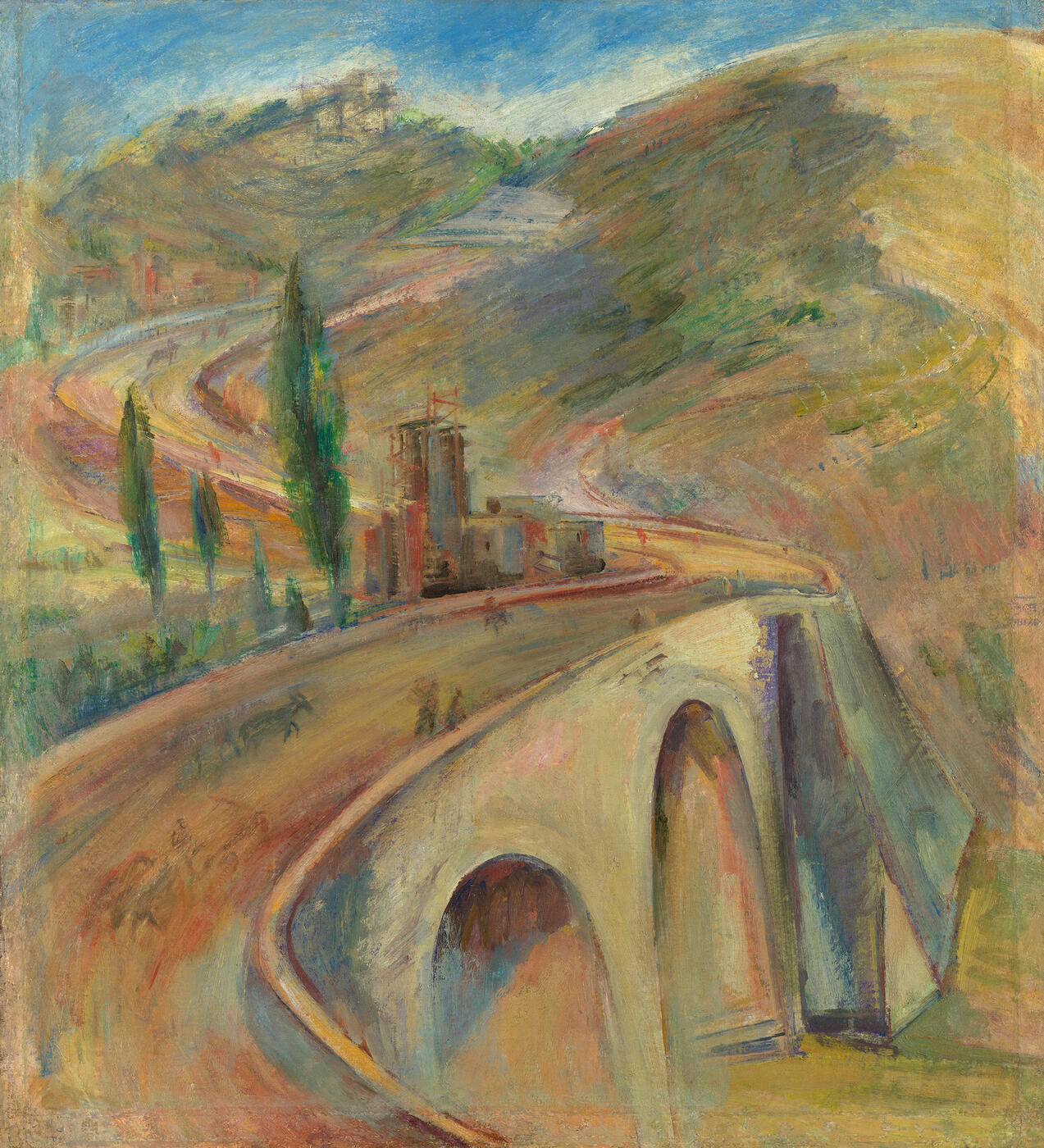28 Nov 2018 Important Russian Art Auctions, at Asia House
28 November 2018

112. KUZNETSOV, PAVEL (1878–1968)
The Vicinity of Yerevan, signed, titled in Cyrillic and dated 1930 on the reverse.
Oil on canvas, 78.5 by 71 cm.
80,000-120,000 GBP
Provenance: Private collection, Europe.
Related literature: For other versions, see D. Sarabianov, L. Budkova, Pavel Kuznetsov, Moscow, Sovetskii khudozhnik, 1975, p. 38, mentioned in the text; pl. 113, illustrated; p. 356, Nos. 493 and 494, listed; p. 358, No. 503, listed; p. 359, illustrated.
The Vicinity of Yerevan is one of the canvasses produced by Pavel Kuznetsov during a trip to Armenia in 1930–1931. The spectacular view, opening up onto the massive old bridge, which was built in the 17th century and for a long time formed part of the famous Silk Road, made such a powerful impression on the artist that he returned to this motif several times, and several currently known paintings featuring this subject give the impression of having been executed in a single burst of activity. The composition presented for auction is slightly more dynamic than the other, similar ones, so that it conveys this feeling of unstoppable movement even more distinctly.
The concentrated depth in Kuznetsov’s steppe landscapes of the 1910s gives way to expressiveness, vigorous rhythms and unexpected viewing angles in the Armenian works of 1930–1931. One may take it for granted that the artists from OST (Society of Easel Painters) exerted a certain influence on Kuznetsov’s work through their urge to enliven any composition as much as possible. It is no coincidence that, even when choosing the historically neutral, “personal” subject in The Vicinity of Yerevan, a painting that stands apart from the commissioned industrial pictures of the Armenian cycle, which showcase the drive towards a radiant future, Kuznetsov finds a spatial composition that is full of its own internal dynamism. He chooses a high vantage point and sets up a very complex spatial torsion, twisting a sinuous mountain road that recedes upwards into the distance, so as to form a sharp, dramatic bend. Everything here is literally in motion — the road that climbs up towards the pass, the curvature of the arches, the figures on the bridge, the cows, the donkey-drawn cart and, finally, even the painterly brushstrokes. The artist’s brush itself seems to be surging unstoppably onwards. Mikhail Alpatov, the author of a monograph on the artist, had good reason to write that “one of P. Kuznetsov’s Yerevan paintings features a stone bridge with mighty arches; its mass is only hinted at, but the mighty span of its arches and the winding course of the road towards a distant horizon take on a tremendous driving force” (M. Alpatov, Pavel Kuznetsov, Moscow, 1972, p.12).
The impression of harmony and unity in The Vicinity of Yerevan, one of Kuznetsov’s best canvasses from the first half of the 1930s, is also undoubtedly sustained by its colour scheme, in which, according to Anatoly Lunacharsky, “all the colours, while generally seeming to remain true to life, prove to have been translated into a new, higher pictorial language and begin to sing” (A. Lunacharsky, “Pavel Kuznetsov” in Kuznetsov P.V. Katalog, Moscow, 1931, p. 5).
Notes on symbols:
* Indicates 5% Import Duty Charge applies.
Ω Indicates 20% Import Duty Charge applies.
§ Indicates Artist's Resale Right applies.
† Indicates Standard VAT scheme applies, and the rate of 20% VAT will be charged on both hammer price and premium.